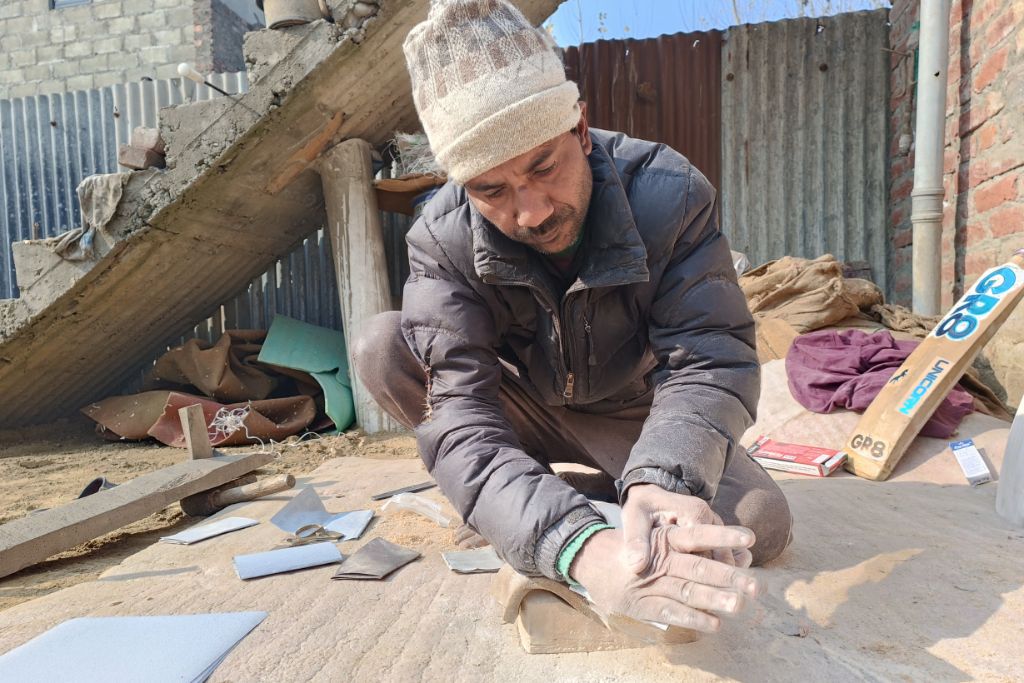
Kashmir’s cricket bats go global, give English willow a run for its money
Bat-maker Fawzul Kabeer helps bring Kashmiri willow bats the attention and market they deserve.

Bat-maker Fawzul Kabeer helps bring Kashmiri willow bats the attention and market they deserve.
Fawzul Kabeer was often bowled a bouncer by his friends in college and he always had to duck. Why, they would ask, did international cricketers never use the hand-crafted bats made of the finest Kashmiri willow from his father’s factory in their hometown of Sangam in south Kashmir’s Anantnag district?
He would just shrug. But the question nagged him and so he would ask his father why. Why didn’t they export their bats? “One day we can,” his father Abdul Kabeer Dar would always calmly reply.
His father had set up the bat-making unit, GreatSports, in 1974 but his products never ventured beyond the local market.
In the true spirit of one of cricket’s great truisms – you can’t score unless you’re on the pitch – Fawzul entered the family business after graduation in 2010.

His was a big dream and it came true in 2021. Fawzul’s decade-long struggle and hard work paid off when ICC approved his Kashmir willow bat brand GR8.
“It wasn’t good news just for me, but the entire Kashmiri bat-manufacturing fraternity,” he said. “Kashmir started making cricket bats in 1920, but it was the first time our bats reached the global market.”
Kashmir started making cricket bats in 1920, but it was the first time our bats reached the global market.
Oman Cricket Board agreed to use the GR8 brand in the 2021 T20 World Cup, hosted jointly by UAE and Oman. A couple of UAE players also used bats and protective gear manufactured in his factory.
The cherry moment came when UAE’s Junaid Siddique clobbered the longest six of the tournament with a “GR8” bat. There couldn’t have been a better advertisement for his bats. Demand shot up with that six.
“Cricket boards around the world contacted me,” said Fawzul. “I had to compete with English willow bats that had dominated the global market for decades,” he said, adding “but I didn’t focus on the cons of my aspirations.”
Of the 2.5 million bats produced annually in Kashmir, the GR8 brand is the only one used by international cricketers.

Known for their durability and affordability, Kashmir’s bats give English willows – which can knock a buyer back by Rs 1.25 lakh – a run for their money. A top-end GR8 bat costs Rs 8,000.
Kashmir is one of the only two places in the world that produce professional willow bats. Yet the willow tree isn’t a native species to Kashmir.
It was the British who brought willow saplings from Essex, England and planted them in Kashmir in the 19th century. The deciduous trees thrived in the cold mountain climes of the Valley.
The British also brought cricket with them – which eventually became India’s national pastime. The willow and cricket melded perfectly in a harmonised quid-pro-quo.
Today, a 2km stretch along National Highway 44 in Sangam, where the GR8 factory is located, is dotted with stores selling a range of bats, stacked together in neat piles. The area is a major producer of Kashmiri willow bats in the Valley.

“There are around 400 factories in the Valley,” said Fawzul, who is also the spokesperson of the Cricket Bat Manufacturing Association of Kashmir.
After his father’s death in 2014, Fawzul sold his land to pay for his visits to cricket-playing nations. He visited cricket academies around the world and major units making bats of English willow. Also, he contacted people at the ICC, cricket’s world governing council.
“I found most of the traders associated with Kashmiri willow bats were sending clefts only to other parts of India. I also learned that people had been misinformed that Kashmir bats were not suitable for big games,” he said.
Fawzul learned how to make a good bat and what qualities people like in a bat.
“I came to know Kashmiri willow is no way weaker than English willow. Actually, we didn’t know the techniques of making a proper professional cricket bat,” he said.
He put his research to good use.
“A cricket bat is not a piece of wood, a handle and some stickers,” Fawzul said. “It’s made with craftsmanship, knowledge of cricket and understanding the demand of a pitch, weather conditions and a cricketer’s playing position.”

Fawzul hired top craftsmen from other Indian states and guided them.
“We inaugurated computer-monitored compression in bat-making because it is an important process,” he said.
That explains why his Kashmiri bats are sending the ball out of the park.
The lead image at the top shows varieties of GR8 branded bats in display at Fawzul Kabeer’s store (Photo by Aamir Ali Bhat)
Aamir Ali Bhat is a journalist and independent researcher based in Kashmir. He writes on human rights violations, politics and the environment.